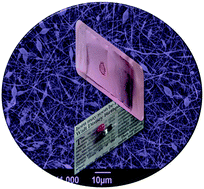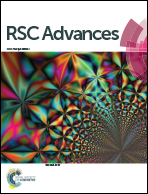An attempt to fabricate a photocatalytic and hydrophobic self-cleaning coating via electrospinning
Abstract
Fluorinated POSS (polyhedral oligomeric silsesquioxanes, F-POSS) was blended with PVDF (poly (vinylidene fluoride)/TiO2 (titanium dioxide) composite by stirring overnight and the resultant solution was electrospun to obtain F-POSS/PVDF/TiO2 micron- and nanofibers with self-cleaning capacity. The coatings were deposited on a fluorosilane-treated glass substrate and they showed both hydrophobicity and photocatalytic activity. The morphology of the fabricated coating was analysed using scanning electron microscopy and atomic force microscopy. The optical properties of the coating were studied using UV-visible spectroscopy, which gave around 65–70% transmittance with just 2% of F-POSS inclusion. Membrane stability on the substrate was checked with the nano-scratch test. The nano-scratch test indicates that the tip of the nano-indenter was unable to percolate through the membrane; rather it just ploughs around its surface, revealing the adhesion of coating and mechanical stability. The contact angle measurements showed a value of 135.5° for the F-POSS/PVDF/TiO2 coating, thus showing its hydrophobic nature. The photocatalytic effect of the membrane was checked with respect to the degradation of methyl orange dye under UV exposure. The surface roughness calculated from the AFM measurements showed that the inclusion of F-POSS into the nanofibers enhanced the surface roughness. We anticipate that the thermally and mechanically stable coating may find immense applications in many real areas like water-purification, window panels, glass modules for photovoltaic devices, etc.


 Please wait while we load your content...
Please wait while we load your content...